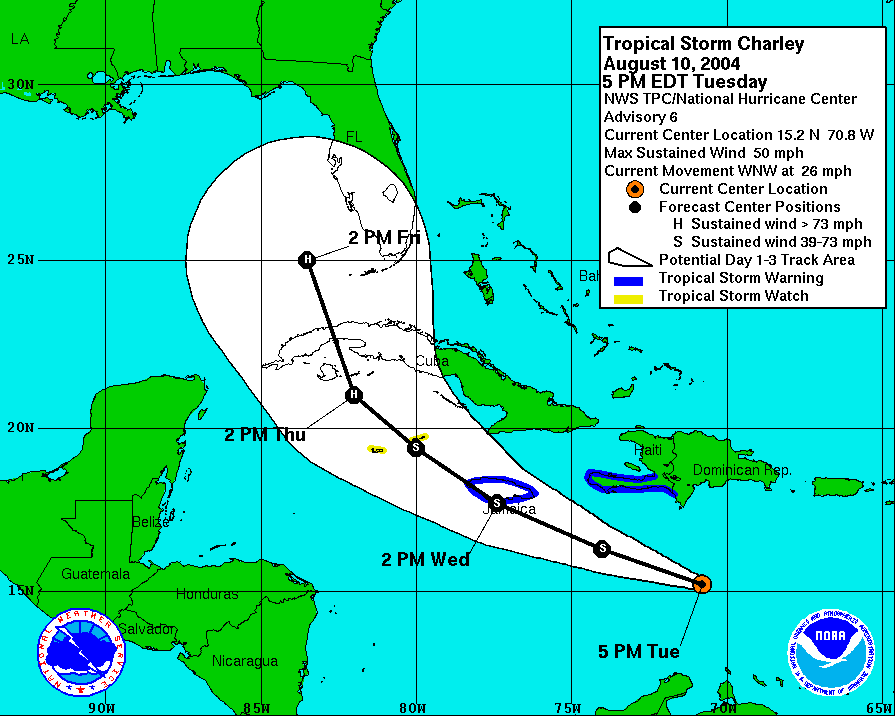TAMPA, Fla (WFLA) – Hurricane Charley made landfall in southwest Florida on Cayo Costa 15 years ago. Charley was short-lived but packed full of power.
It began as a tropical wave moving across the southern Atlantic but did not initially develop until Aug. 9 when a tropical depression formed southeast of Barbados. Charley swiftly moved west into the Caribbean. A tropical storm formed a day later and was given the “C” name, Charley.
Rapid west-northwest movement continued along with strengthening. A turn to the north-northwest began as it rounded the southwestern corner of the Bermuda High in the Atlantic. Charley buzzed past Jamaica on Aug. 10 and strengthened into a Category 1 hurricane.
As Charley barreled toward and over western Cuba, it progressed into a major Category 3 hurricane. Brief weakening occurred just after emerging into the Florida Straits, likely a delayed effect of Cuba’s mountains. However, as Charley moved over the Dry Tortugas and past the Florida Keys, the rapid intensification process increased winds to 150 mph, a Category 4 hurricane.
Charley’s pressure dropped 23 mb in just under five hours, which is rare in such a short amount of time but also rare because of the proximity to land. Charley’s forward speed was also rapid. Charley moved from east of Lesser Antilles to the Virginia coastline in just 6 days.
Charley was only the third named storm of the season but it would be the first of four tropical cyclones to make landfall in Florida that year. Hurricanes Frances, Ivan and Jeanne would follow before the end of another record-setting season in 2005.
While Hurricane Charley was forecast to make landfall near Tampa, Punta Gorda, Fort Myers and Charlotte County had been in the National Hurricane Center’s “cone of uncertainty” for four days prior to landfall. Charley turned toward the peninsula sooner than anticipated leaving Tampa spared. However, Charlotte, Lee and Sarasota Counties still felt unprepared.

This led to changes in messaging for the National Hurricane Center as well as local media. In all, there were 10 direct fatalities and a preliminary estimate of $14 billion in damage. That number was revised to $15.1 billion in 2011.






